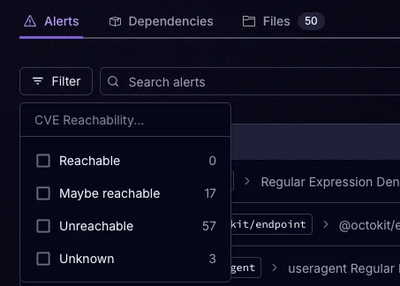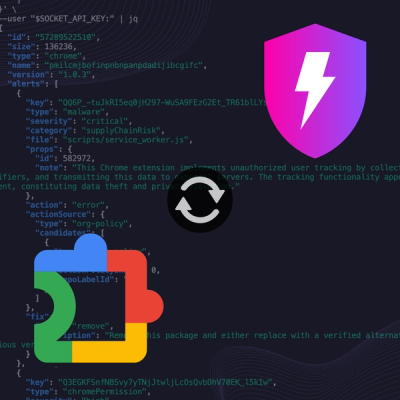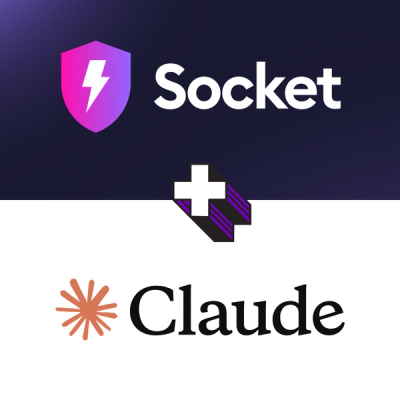
Product
Announcing Precomputed Reachability Analysis in Socket
Socket’s precomputed reachability slashes false positives by flagging up to 80% of vulnerabilities as irrelevant, with no setup and instant results.
@monogrid/gainmap-js
Advanced tools
A Javascript (TypeScript) Port of Adobe Gainmap Technology for storing HDR Images using an SDR Image + a gain map
A Javascript (TypeScript) Encoder/Decoder Implementation of Adobe's Gain Map Technology for storing HDR Images using an SDR Image + a "Gain map"
:warning: This library is primarily intended for encoding and decoding gain map images for the three.js 3D Library
It can be used for general encode/decode of gain maps but it depends on the three.js library which, in itself, is quite heavy if you only use it to encode/decode gain maps.
https://monogrid.github.io/gainmap-js/
Compares loading:
JPEG file with embedded gain map datawebp sdr file + a webp gain map + metadata JSON.hdr file for comparisonUse it to convert .hdr and .exr files into gain maps. It's free and the whole process happens in your browser.
$ npm install @monogrid/gainmap-js three
See here for a detailed explanation, here are some relevant parts:
A gain map is a single file with a second pseudo-image embedded in it to create an optimized result for a specific monitor. It can be used to generate the HDR version (which looks dramatically better where supported), the SDR version (without tone mapping to ensures great quality), or anything in between (to better support less capable HDR displays).
Gain maps are not a new type of file, but rather a technology which can be embedded into a variety of image formats. There are reference specs already for the JPG, AVIF, JXL, and HEIF file formats. JPG is especially notable as it could not properly support HDR without gain maps and it offers a very useful bridge to the future (i.e. highly compatible with today’s software).
A gain map includes:
- A base (default) image. This can be an SDR or an HDR image (JPG gain maps are always encoded with SDR as the base). If the browser or viewing software does not understand gain maps, it will just the treat file as if it were just the base image.
- The gain map. This is a secondary “image” embedded in the file. It is not a real image, but rather contains data to convert each pixel from the base image into the other (SDR or HDR) version of the image.
- Gain map metadata. This tells the browser how the gain map is encoded as well as critical information to optimize rendering on any display.
Please note that Google is adopting the gain map technology in Android 14 but its naming of the technology refers to it as Ultra HDR Image Format and a JPEG file with embedded gain map is apparently called JPEGR in their terminology, we call it HDRJPEG for the moment.
Refer to the WIKI for detailed documentation about the API.
The main use case of this library is to decode a JPEG file that contains gain map data
and use it instead of a traditional .exr or .hdr image.
NOTE: Starting from v3.1.0 Decoding also works in a WebWorker, thanks to Alejandro Romano for the contribution
This approach lets you load a single file with an embedded Gain Map.
The advantage is to have a single file to load.
The disadvantages are:
import { HDRJPGLoader } from '@monogrid/gainmap-js'
import {
EquirectangularReflectionMapping,
Mesh,
MeshBasicMaterial,
PerspectiveCamera,
PlaneGeometry,
Scene,
WebGLRenderer
} from 'three'
const renderer = new WebGLRenderer()
const loader = new HDRJPGLoader(renderer)
const result = await loader.loadAsync('gainmap.jpeg')
// `result` can be used to populate a Texture
const scene = new Scene()
const mesh = new Mesh(
new PlaneGeometry(),
new MeshBasicMaterial({ map: result.renderTarget.texture })
)
scene.add(mesh)
renderer.render(scene, new PerspectiveCamera())
// Starting from three.js r159
// `result.renderTarget.texture` can
// also be used as Equirectangular scene background
//
// it was previously needed to convert it
// to a DataTexture with `result.toDataTexture()`
scene.background = result.renderTarget.texture
scene.background.mapping = EquirectangularReflectionMapping
// result must be manually disposed
// when you are done using it
result.dispose()
Using separate files will get rid of the limitations of using a single JPEG file but it will force to use three separate files
import { GainMapLoader } from '@monogrid/gainmap-js'
import {
EquirectangularReflectionMapping,
Mesh,
MeshBasicMaterial,
PerspectiveCamera,
PlaneGeometry,
Scene,
WebGLRenderer
} from 'three'
const renderer = new WebGLRenderer()
const loader = new GainMapLoader(renderer)
const result = await loader.loadAsync(['sdr.jpeg', 'gainmap.jpeg', 'metadata.json'])
// `result` can be used to populate a Texture
const scene = new Scene()
const mesh = new Mesh(
new PlaneGeometry(),
new MeshBasicMaterial({ map: result.renderTarget.texture })
)
scene.add(mesh)
renderer.render(scene, new PerspectiveCamera())
// Starting from three.js r159
// `result.renderTarget.texture` can
// also be used as Equirectangular scene background
//
// it was previously needed to convert it
// to a DataTexture with `result.toDataTexture()`
scene.background = result.renderTarget.texture
scene.background.mapping = EquirectangularReflectionMapping
// result must be manually disposed
// when you are done using it
result.dispose()
Encoding a Gain map starting from an EXR file.
This is generally not useful in a three.js site but this library exposes methods
that allow to encode an .exr or hdr file into a jpeg with an embedded gain map.
import { compress, encode, findTextureMinMax } from '@monogrid/gainmap-js/encode'
import { encodeJPEGMetadata } from '@monogrid/gainmap-js/libultrahdr'
import { EXRLoader } from 'three/examples/jsm/loaders/EXRLoader.js'
// load an HDR file
const loader = new EXRLoader()
const image = await loader.loadAsync('image.exr')
// find RAW RGB Max value of a texture
const textureMax = findTextureMinMax(image)
// Encode the gainmap
const encodingResult = encode({
image,
// this will encode the full HDR range
maxContentBoost: Math.max.apply(this, textureMax)
})
// obtain the RAW RGBA SDR buffer and create an ImageData
const sdrImageData = new ImageData(encodingResult.sdr.toArray(), encodingResult.sdr.width, encodingResult.sdr.height)
// obtain the RAW RGBA Gain map buffer and create an ImageData
const gainMapImageData = new ImageData(encodingResult.gainMap.toArray(), encodingResult.gainMap.width, encodingResult.gainMap.height)
// parallel compress the RAW buffers into the specified mimeType
const mimeType = 'image/jpeg'
const quality = 0.9
const [sdr, gainMap] = await Promise.all([
compress({
source: sdrImageData,
mimeType,
quality,
flipY: true // output needs to be flipped
}),
compress({
source: gainMapImageData,
mimeType,
quality,
flipY: true // output needs to be flipped
})
])
// obtain the metadata which will be embedded into
// and XMP tag inside the final JPEG file
const metadata = encodingResult.getMetadata()
// embed the compressed images + metadata into a single
// JPEG file
const jpeg = await encodeJPEGMetadata({
...encodingResult,
...metadata,
sdr,
gainMap
})
// `jpeg` will be an `Uint8Array` which can be saved somewhere
// encoder must be manually disposed
// when no longer needed
encodingResult.gainMap.dispose()
encodingResult.sdr.dispose()
If you import @monogrid/gainmap-js/libultrahdr
You will need to exclude it from Vite optimizations.
// vite.config.js
module.exports = defineConfig({
...
optimizeDeps: {
exclude: ['@monogrid/gainmap-js/libultrahdr']
},
...
})
Clone the repository with git submodules recursively:
$ git clone --recurse-submodules git@github.com:MONOGRID/gainmap-js.git
Proceed to build the libultrahdr-wasm module following the documentation found here, here's a quick summary
$ cd gainmap-js/libultrahdr-wasm/
Create a meson "cross compile config" named em.txt and place the following content inside:
[binaries]
c = 'emcc'
cpp = 'em++'
ar = 'emar'
nm = 'emnm'
[host_machine]
system = 'emscripten'
cpu_family = 'wasm32'
cpu = 'wasm32'
endian = 'little'
Then execute
$ meson setup build --cross-file=em.txt
$ meson compile -C build
After compiling the WASM, head back to the main repository
$ cd ..
$ npm i
$ npm run build
:warning: Building the library with decode only capabilities will not allow to run playwright e2e tests with
npm run testthis method should only be used by people who would like to customize the "decoding" part of the library but are unable to build the WASM module for some reason (emscripten can be tricky sometimes, I've been there)
Clone the repository normally:
$ git clone git@github.com:MONOGRID/gainmap-js.git
$ cd gainmap-js
$ npm i
build with
$ npm run build --config rollup.config.decodeonly.mjs
FAQs
A Javascript (TypeScript) Port of Adobe Gainmap Technology for storing HDR Images using an SDR Image + a gain map
The npm package @monogrid/gainmap-js receives a total of 456,305 weekly downloads. As such, @monogrid/gainmap-js popularity was classified as popular.
We found that @monogrid/gainmap-js demonstrated a healthy version release cadence and project activity because the last version was released less than a year ago. It has 1 open source maintainer collaborating on the project.
Did you know?

Socket for GitHub automatically highlights issues in each pull request and monitors the health of all your open source dependencies. Discover the contents of your packages and block harmful activity before you install or update your dependencies.

Product
Socket’s precomputed reachability slashes false positives by flagging up to 80% of vulnerabilities as irrelevant, with no setup and instant results.

Product
Socket is launching experimental protection for Chrome extensions, scanning for malware and risky permissions to prevent silent supply chain attacks.

Product
Add secure dependency scanning to Claude Desktop with Socket MCP, a one-click extension that keeps your coding conversations safe from malicious packages.